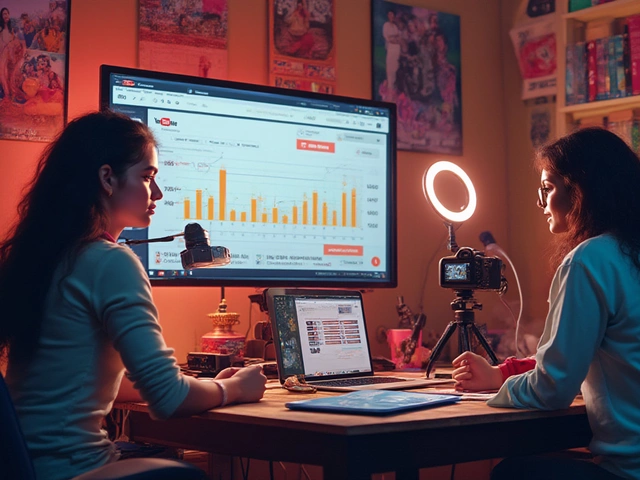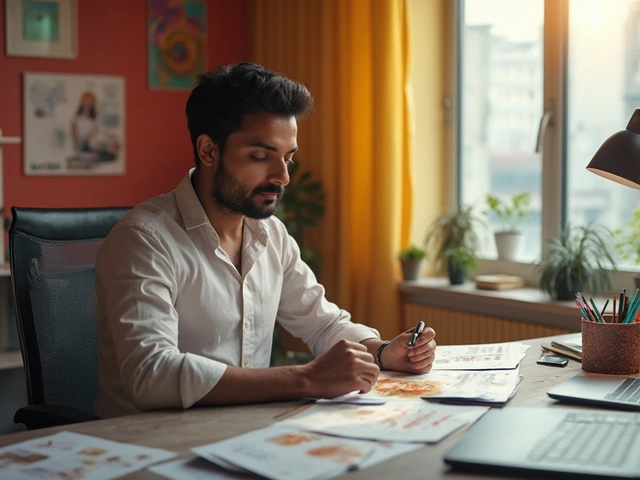Alright, let's cut straight to it. You've got this brilliant idea for a website, but where do you even start? Jumping straight into design might seem tempting, but take a breather. There's some groundwork you need to lay first, and trust me, it makes all the difference.
First up, understanding your audience. Who's going to visit your site? Knowing your audience shapes everything—from design choices to the kind of content you post. It's not enough to say 'everyone.' Narrow it down. Are they teenagers or retirees? Tech-savvy or total newbies? Pinpointing this helps in designing a site that speaks directly to them.
- Understand Your Audience
- Define Clear Goals
- Plan Your Content
- Sketch a Wireframe
- Consider User Experience
Understand Your Audience
Knowing who you're talking to is half the battle, right? When it comes to website design, the same rule applies. You wouldn't make a kids' site look like a corporate banker’s, would you? So, let's dive into the why and how of understanding your audience.
The first step is figuring out the demographics—age, gender, location, and interests. This paints an initial picture. For instance, are you targeting tech-savvy millennials or senior readers? Your design style will change based on this info.
Next, think about behavior. What problems does your audience face that your website can solve? Are they looking for information, entertainment, or to make a purchase? Knowing this helps you shape content and design that engages and retains visitors.
Use analytics tools like Google Analytics to gather data on site visitors. It can show which pages they frequent, how long they stay, and what they click on. In addition to tools, consider conducting surveys or polls. Ask your potential users directly what they want.
You know how folks rave about creating buyer personas? It’s all about crafting a profile of your ideal visitor. Give them a name, understand their pain points and goals, and keep them in mind during the web planning process.
Fascinating fact: A study by Forrester Research found that a positive user experience can boost a site's conversion rates by 400%. Understanding your audience plays a massive role in this. Tailoring your design to fit their needs perhaps could be the difference between a visitor and a loyal customer!
Define Clear Goals
Now, before you open up that laptop and start clicking away, it’s crucial to know why you're making this website in the first place. You'll save yourself a ton of headaches later on if you set some clear goals from the beginning. Ask yourself, what do I want this site to do?
Is it a website design for a personal blog, aiming to share your wisdom and experiences with the world? Or maybe you're building an e-commerce site trying to sell your homemade candles? Whatever the mission, defining it early sets the blueprint for everything else.
Here’s a handy way to organize your thoughts: create a list of objectives. Some common goals might be:
- Increasing brand awareness
- Generating leads or sales
- Providing information or support
- Building a community
Getting specific is key. Instead of just saying, "I want more traffic," think about what 'more' actually means to you. Maybe it's doubling your visitors each month or increasing the average time spent on your site.
And here’s a little insider tip: Make sure every page on your site aligns with these web planning goals. If a page doesn't serve a purpose, it's only taking up space.
Last but not least, keep revisiting these goals. The web is a fast-paced world and sometimes your intentions might shift. Keeping them in check ensures your site stays relevant and effective.

Plan Your Content
Alright, here's where things start to get interesting. You can't just throw random text on a site and call it a day. Planning your content is like picking the right ingredients for a recipe—it's gotta be just right. Content is what pulls people in and keeps them coming back for more.
So, where do you start? Begin by jotting down the main things your audience would want to know or see. Are you showcasing products, sharing insights, or maybe even crafting a blog? Knowing this helps you prioritize what goes where.
Breaking it down further, think about these elements:
- Homepage Content: This should hook visitors instantly. Have a clear message that introduces what you're all about.
- About Page: People want to know who's behind the curtain. Share a bit about your journey—just keep it real and relatable.
- Product or Service Details: Explain clearly and concisely what you're offering. Highlight the benefits and why it stands out.
- Blog or News Section: If you're going this route, plan topics that align with your website goals. Regular updates keep it fresh and engaging.
- Contact Information: Make it easy for folks to get in touch. A clear contact form or simple email link works wonders.
Keeping the structure well-organized not only helps visitors find their way around easily but also gives the search engines a clearer idea of what your site's all about. And, while you're at it, remember the magic of keywords. They aren't just for search engines; they guide you in choosing the right words to connect better with your audience.
Don't forget, content planning is a cycle. Regularly update and tweak your content based on what works for your audience and what's trending in your niche. Consider using tools like Google Analytics to check what content resonates most with your visitors.
Getting your content right lays the solid foundation your website needs. It's all about speaking the right language for your people—giving them value at every click.
Sketch a Wireframe
So, you've got your audience locked down, and your goals are crystal clear—next up is sketching your wireframe. Think of this as the blueprint for your website. It's where function meets design. A wireframe gives you a chance to visualize the layout and user journey without any distractions from colors and images.
Start simple. Grab a piece of paper, or use a digital tool like Balsamiq or Sketch. Begin by outlining the basic structure of each page. Picture it like arranging furniture in a room you've never lived in before—it needs to feel right. You wouldn't want to block a window with a couch, and similarly, you don't want a major clickable button buried in a corner.
As you sketch, consider these elements:
- Header and Footer: What's going up top and at the bottom? Typically, headers contain logos and navigation. Footers usually hold contact info and site links.
- Navigation: How will users get from A to B? Simple, clear paths are key, so think logically.
- Content Placement: Where will texts and images go? Prioritize the most crucial information where it's easily seen.
- User Experience: Consider the flow. Is it intuitive? Try to walk through the process as your user would.
It's all about balance between design and function. Since this part is pretty dynamic, don't expect to get it perfect in one shot. Modify as you go, keeping feedback in mind if possible.
If you're into data, studies often show well-planned layouts improve user interaction by up to 30%. It sounds like a pretty decent reason to put some effort into wireframe sketching.

Consider User Experience
Designing a site isn't just about making it look pretty. It's about making sure visitors enjoy using it. Ever stumbled upon a site where you couldn't find the 'Contact Us' page or got lost in unnecessary clicks? Yeah, that's a UX fail.
So, how do you nail great user experience? First, keep things simple. The more stuff you cram in, the easier it is to confuse visitors. Prioritize clean navigation. Enabling users to find what they need effortlessly should be a top goal. Imagine someone's visiting to get a quick piece of info—speed matters.
Let's talk about loading times. Did you know that a delay of just one second in page response can result in a 7% reduction in conversions? Speed isn't just a luxury; it's crucial. Use tools like Google PageSpeed Insights to optimize your site to load swiftly across all devices.
- Mobile optimization is a non-negotiable. With about 54% of global website traffic coming from mobile phones, a site that isn't mobile-friendly essentially turns away potential visitors.
- Choose colors that are easy on the eyes, and make sure your text is readable. A site that looks like a neon light display after midnight is bound to scare users away.
- Use call-to-action buttons smartly. They guide your visitors on what step to take next, whether it's signing up for a newsletter or making a purchase. Make these buttons stand out, but don’t overdo the pop-ups; they can be disruptive.
Ultimately, the goal is to anticipate user needs and make interacting with your site as smooth as butter. A well-considered user experience leads to happier visitors who are more likely to stick around and explore, which is precisely what you want.






Written by Arjun Mitra
I am an IT consultant with a keen interest in writing about the evolution of websites and blogs in India. My focus is on how digital spaces are reshaping content creation and consumption. I aim to provide insights and strategies for those looking to thrive in the digital landscape.
All posts: Arjun Mitra